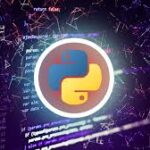Complete Git GitHub guide (7 HOURS) – Master all Git features: commits, branches, merging, rebasing & collaborating
Summary
The Complete Git & GitHub Course provides a comprehensive introduction to version control using Git and GitHub, aimed at both beginners and those with some experience. This course is designed to help participants understand the fundamental concepts of Git, install the necessary tools, and effectively manage their projects through version control. By mastering Git and GitHub, learners will be equipped to develop open-source projects and collaborate effectively with other developers.
Key Learning Outcomes: Participants will learn how to:
- Install Git and set up local repositories.
- Use command-line tools for Git operations.
- Handle commits, branches, and merges.
- Work with GitHub for source control and collaboration.
Course Structure:
- Introduction to Git:
- Understanding the basics of Git and its importance in version control.
- Steps to install Git on various operating systems, focusing on Windows.
- Command Prompt Basics:
- Introduction to the command prompt terminal, essential for executing Git commands.
- Basic navigation and command usage to enhance command-line proficiency.
- Local Git Repositories:
- Learning how to initialize a new Git repository.
- Making changes, staging them, and committing to the repository to save different versions of the project.
- Project History:
- Exploring how to check the history of a project and navigate through previous states using commands like
git checkout,git revert, andgit reset.
- Exploring how to check the history of a project and navigate through previous states using commands like
- Branching and Merging:
- Understanding how to create, checkout, and merge branches within a Git repository.
- Performing fast-forward and 3-way merges, and resolving merge conflicts effectively.
- Advanced Git Commands:
- Learning to manage the detached HEAD state and make experimental commits.
- Performing rebasing of branches and using tags to manage software versions.
- Connecting Local and Remote Repositories:
- Steps to link local repositories with remote ones on GitHub.
- Executing push, fetch, and pull operations to synchronize changes between local and remote repositories.
- Pull Requests and Collaboration:
- Opening and merging pull requests to incorporate changes from collaborators.
- Understanding how to fork repositories, clone them, and contribute to public projects.
- Utilizing GUI Tools:
- Introduction to graphical user interface (GUI) applications such as GitHub Desktop, SourceTree, and Visual Studio Code to simplify routine Git operations.
- Contributing to Open Source:
- Strategies for contributing to open-source projects and building confidence in managing personal projects under various licenses.
Interactive Learning and Support: The course emphasizes interactive learning, encouraging participants to ask questions and seek clarification whenever necessary. This collaborative environment is designed to enhance the learning experience, allowing students to engage with instructors and peers effectively.
Target Audience: This course is suitable for:
- Beginner web developers looking to understand version control.
- Anyone interested in learning Git and GitHub for personal or professional projects.
- Students with basic knowledge of version control systems aiming to enhance their skills.
- Open-source software development team leads who wish to implement Git and GitHub in their workflows.
Prerequisites:
- No prior knowledge of Git and GitHub is required, though basic familiarity with command prompt terminals is beneficial.
- A code editor, such as Visual Studio Code, is recommended for hands-on practice.
Conclusion: By the end of this course, participants will have a solid understanding of Git and GitHub, empowering them to manage their projects effectively and collaborate with others in a professional environment. The skills acquired will be invaluable for anyone looking to enhance their software development capabilities and engage with the broader development community. Whether for personal projects or contributions to open source, this course provides the foundational knowledge and practical skills needed to succeed in using Git and GitHub.
What you’ll learn
-
Basics of Git
-
Git installation
-
The basics of command prompt terminal in Windows
-
How to handle local Git repositories
-
How to make commits using Git terminal and VSC
-
How to check the history of your project
-
Using github for source control
-
How to use Git Commands
Requirements
-
VS Code Editor Or Any Text Or Code Editor
-
Basic Knowledge on Command Prompt Terminal but not necessary
-
No prior knowledge of Git and GitHub is required
-
Interest in learning new skill about version control system
Description
This is all about high level overview on Complete Git & GitHub both for the beginners and advanced software professionals.
If any one wants to develop their Open Source Project Or wants to contribute to the Open Source Project then learning Git and GitHub is must. Even if you are a student and wants to become a software developer Or website designer then learning Git and GitHub will help you achieve your goal with well designed infrastructure to get contribution for your project from different developers.
Nowadays many professional developers or designers needs to know how to work with Git and GitHub. Git allows us to record different versions of our project and lets us go back in time and check previous states of the project. As for the GitHub, it’s an online service where we can share our code to the world and also it allows us to collaborate with different developers.
This course consists different sections. We will start from Git basics, where you can learn about how to install Git. We will guide how to use the commands on windows mainly, we will create our first local repository, and you will see how to save different versions of the project, as the snapshots, using commits.
Then we will show you how to go back in time and check the previous states of the project, update them Or delete with help of git checkout, git revert and git reset.
Course Details:
You will learn all these below skills in detail:
Practiacally you will learn
- Initialize new Git repository
- Make changes, add them to staging area and commit
- Working with command prompt to master your CMD Skills
- Complete guide on visual studio code editor
- Create branches, checkout branches and merge branches
- Perform fast-forward and 3-way merges of the branches
- Resolve merge conflicts
- Move into detached HEAD state and make experimental commits there
- Perform rebasing of the branches
- Connect local and remote repositories
- Pushing, fetching and pulling operations
- Open Pull Request
- Merge Pull Request
- Merging with and without merge conflicts
- Add software versions using Git Tags
- Create forks from other repositories
- Contribute to public repositories using technique of forks and pull requests
- Perform rebasing
- Git collaboration
- How to contribute to open source projects
- Build solid confidence in creating your own projects with different types of licences
You will use not just terminal and shell commands for performing Git operations. In parallel you will also use GUI applications that simplify routine day-by-day Git operations:
- GitHub Desktop
- SourceTree
- VisualStudio Code
After getting a solid knowledge on Git, we will learn the basics of GitHub. Then we will show you how to push local repository to remote repository and pull the remote repository to our local machine. Then we will show you how to work with one of the greatest features of Git, which is branching. We will learn about how to deal with branches locally and also, remotely. We will show you how to merge branches with different methods, and also, how to deal with merge conflicts.
Then we will see about forking and contributing. We will learn about how to copy someone else’s remote repository on your GitHub account, how to clone it to your local computer and how to contribute to the original project. Finally, we will discuss about collaborating on GitHub. We will go through some really important topics, such as, how to set up a collaboration team, how to define different rules for collaborators and much more.
We encourage you to feel free to ask the questions if you get stuck at any point of time line related to our course and the commands we have used in our course. Please don’t use any strange and the code which is not used in our course, so your cooperation is very important for us. If you have any suggestions then feel free to post in the private message sections and help us to improve our course creating skill.
So JOIN US & Make your learning journey more easier than before.
Who this course is for:
- Beginner web developers
- Anyone who wants to learn about Git and GitHub
- Students who have some basic knowledge about version control systems and want to develop their skills
- All the Open Source Software developing team leads who wants to work with Git & GitHub
- Students who have some basic knowledge about version control systems and want to develop their skills










